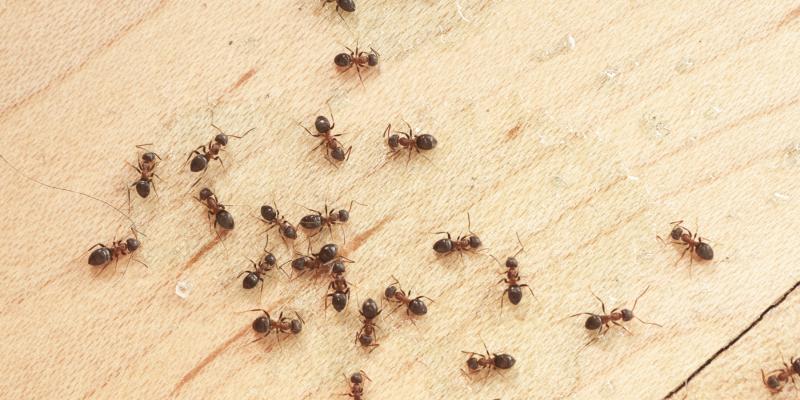
I would have to say one of thee most unpopular pests in the Pacific Northwest that is often encountered is the mighty Odorous House ant aka “sugar ant”. I have long often thought of them as not the Goliath of ants like their larger counterparts the Carpenter ant, but the David. Although tiny in stature, they are one to be reckoned with and often most difficult to battle. (Sling and stones excluded)
The Odorous house ant has many “nicknames” it is referenced as. Most commonly the “sugar ant”. Not because they taste sweet (just sayin’), or have a pleasant personality but because they are often found on or near any sweet substance that are left about for them to congregate too. (In my best British acent) Like wilder beasts during an African drought, they trail in droves from whence they came, and line the edge of a drop of syrup or splash of cool-aid like a popular drinking hole in the Serengeti. Another name is the “ #iss ant”. Probably because they tick people off so much….but why odorous? Are they hygiene ignorant? A hint…Another name is a “coconut ant”. This comes from the odor the ants produce when crushed, which is very similar to the pungent odor of a coconut. Thus the “Odorous House ant”.
Odorous house ants or OHAS as we here in pest control refer to them, are very common in the Pacific Northwest and many areas throughout America. They range in color from brown to black and range in length from 1/16 to 1/8 inches (1.5–3.2 mm). Their antennae have 12 segments. Little is known about the lifespan of the ant, though it has been shown that queens can live at least 8 months (and probably much longer), workers at least a few months (and show every indication of living as long as queens), and males appear to live only approximately a week.
OHAS are very tough, and injured workers have been observed to continue living and working with little hindrance. Some queens with crushed abdomens could still lay eggs, and there are documented instances of T. sessile queens surviving without food or water for over two months. They also appear highly tolerant to heat and cold. These ants are difficult to remove from the home. Many times, leaving an area that is being treated and popping up on the other end of a structure weeks later. They are attracted to moisture, sweets and electical curents. Often we find them in electrical outlets, computers and smoke detectors. They will often seek a random house for warmth and nesting or no aparent rhym or reason so remember this for beating your self up over literally, spilt milk. They are not a structural pest but can contaminate food.
Although very frustrating, they can be maintained or eliminated. Diligence on taking action makes a big difference in outcome for pest control.